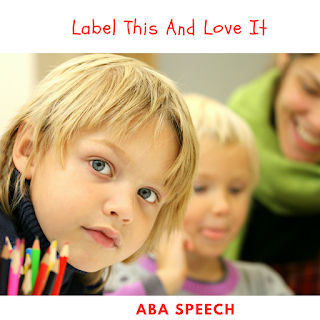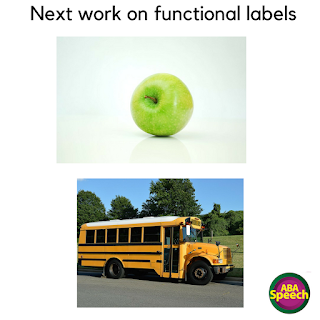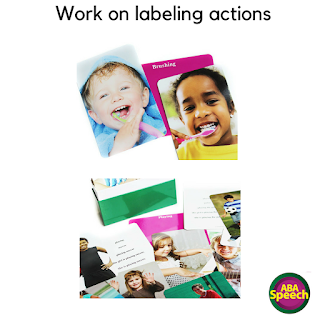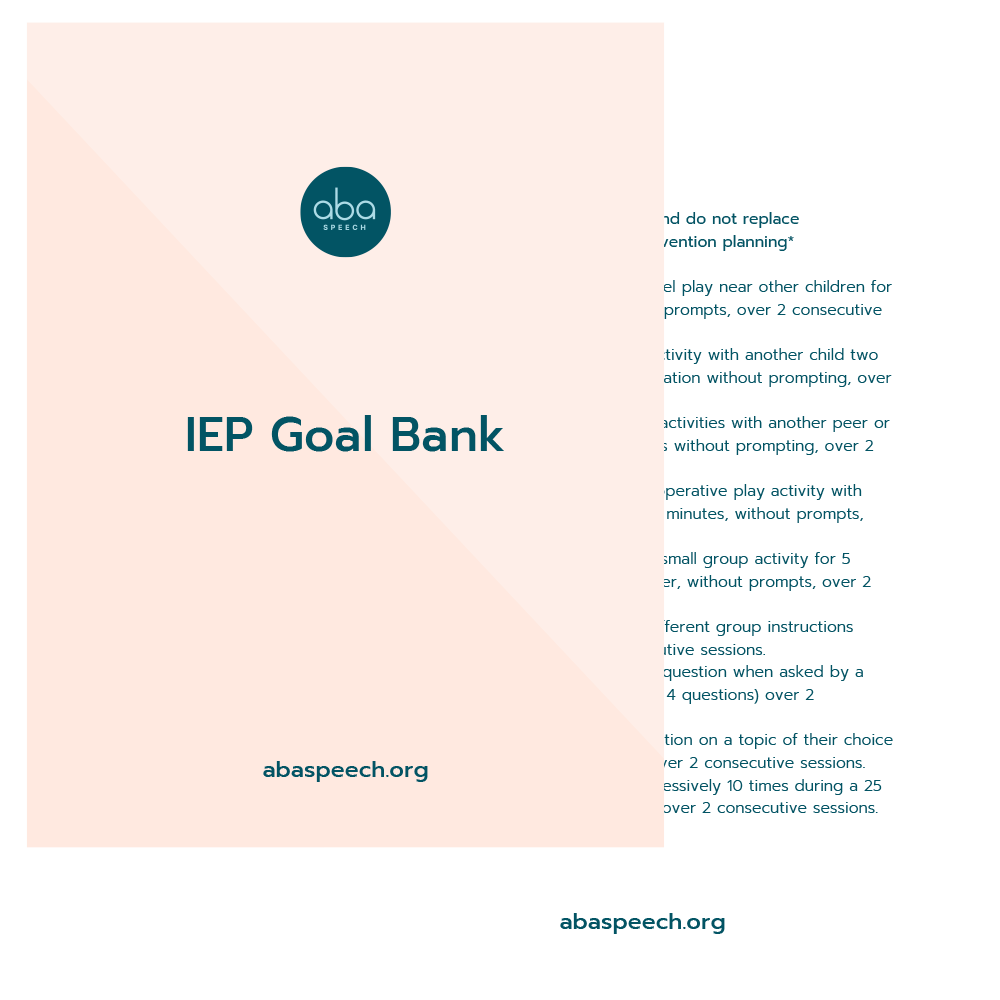skill for a variety of students that we may encounter in our practice. But what
to label is the question. How do we choose what targets we should choose for
our students with more intensive needs? I wanted to give you a snapshot into
the process I use when choosing labeling targets for students with more complex
communication delays.
given your student a robust assessment and it indicates that labeling is an
important skill to target. Labeling for a majority of early learners may be a
socially significant skill to work on directly. It may be a part of a
comprehensive and collaborative communication program. Other skills might
include requesting, following directions, gross motor imitation, echoic training,
etc..
working on labeling, what should we target? When I am working with a student
who is very limited verbally and does not currently label anything, I always
take into consideration the students motivation. Ask yourself “what does the
student enjoy?” Let’s start here! When a student is motivated by the target-
the progress they make may be faster.
student who a year prior had no way to functionally communicate. The first IEP
year, we focused on helping the student develop a response form or way to
communicate with the world. With a lot of hard work by all members of the team,
the student was ready to work on labeling. The student loved going to the gym,
so we started with this. I took a picture of our gym at school that he would
utilize 2 periods a day. He baselined at 100% – wow!!!! It was so amazing to
see a student, who a year prior, could not communicate- label gym. Hooray!!! We
continue to work on motivating items, people and places for this learner.
questions: what does my student like to play with? What does my student like to
eat? What activities does my student engage in for fun? Who does my student
like spending time with? Where does my student like to visit? Choosing initial
labeling targets based on student motivation, will allow the student to work on
a difficult task with a preferred target. This will allow our students to gain
confidence with their ability to label. This is a great way to start work on
this skill. As the student is able to label more preferred items, you can also
target more functional items. Other targets may include actions. Direct
instruction of labeling is important to help our students increase their
language skills. Label this and love this!
So my strategy for working on labeling for early learners is to start work on labeling preferred items. I then fade in working on labeling functional items and actions. Labeling can be difficult for students- so following this framework can be helpful!
I have an awesome freebie all about labeling a variety of nouns that are functional, access it here.
If you are looking for a super helpful product to work on labeling actions check out the action builder cards here.
Please stay in touch for more tips on providing systematic language instruction at www.abaspeech.org.






0 Comments